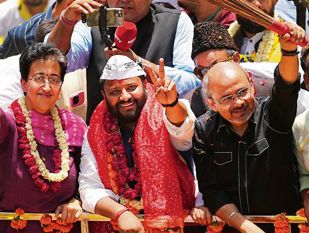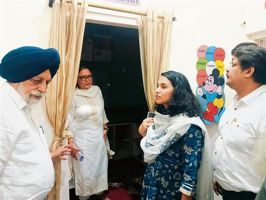
iStock
Rajendra P Jindal
Imagine you are getting on with years and see a friend of yours terminally bed ridden, unable to take care of himself. Or you know someone riddled with cancer and suffering from excruciating pain. Reflexively, you pray not to be put through this kind of torture. But if you still get into this kind of situation, your prayer changes to: ‘God, please take me away’. If God still doesn’t listen, who will help? Probably your children are settled abroad or they don’t care. You wish for a lethal injection but would have to be lucky to be in the Netherlands.
On the face of it, euthanasia should be a straightforward procedure. But the extremes of the debate remain as starkly opposed as life and death themselves. This has been going on for centuries and no solution seems in sight any time soon.
Those who are pro-euthanasia (a vast majority of doctors, lawyers and the suffering lot) hold that a mentally competent, terminally-ill patient suffering agonising pain wants someone to end his life, which has lost all quality. This reasonable right - not to be forced to suffer - should be treated like a fundamental right. They summarise their arguments on three grounds: (i) We need it. It is a matter of compassion. (ii) We want it. It is a matter of patient’s autonomy. It is his life, not yours. Therefore, let them make their own choice. (iii) We can control it.
Many fear this is like giving a dangerous weapon in the hands of doctors and the society as a whole though the pro people argue that there can be sufficient in-built controls. In the survey-friendly US, two out of three want doctors to help desperately sick patients commit suicide. In a debate at Debate.org, 78% said yes to euthanasia.
Those opposed are again many doctors, lawyers and mostly religious far-right people. Their point of view is that once legalised, it will be widely abused and they quote the Hippocratic Oath: first of all, do no harm. The religious say life is a gift from God and nobody has the right to take it; that suicide is a terrible tragedy and the society should prevent it rather than promote it. Their most potent and pragmatic argument is that good “palliative care” can make many patients change their minds. What they ignore is that it can be unaffordable, can fail and there are not sufficient doctors trained in palliative care. Another strong argument is that social and family pressures may be behind the desire for euthanasia. The right to die may actually be the duty to die.
Many doctors agree that though the law forbids them but in the end, their conscience wins. A significant number of doctors admit to having committed euthanasia in this way. There are patients sophisticated enough to signal this requirement and there are physicians sympathetic enough do it in a way that the intent and the knowledge are left deliberately ambiguous. Though many physicians fear that its legalisation will lead to ill-considered decisions, some vehemently hold that it is incredibly arrogant to say doctors will let patients go just like that.
If those who matter were to enter less into the debate and more into how to regularise it, an acceptable could be found.
If they can offer a gentler and dignified alternative to either a life ground down by pain or death in a high tech hell, the demand for euthanasia may disappear. It may be possible to find a compromise between foes and advocates of legalised euthanasia.
If euthanasia was considered not incompatible with patient autonomy and good terminal care, we may be able to find a sensible and humane way of dealing with the unbearable pain and suffering.
Many nations might be encouraged by the example of the Netherlands to move towards more merciful laws. Hopefully, sanity will prevail and the world will become a more humane place than it is today. A few years back, a book by Dr. Bert Keizer, a nursing home physician in Amsterdam, about his life among the dying, Dancing with Mister D, was a best seller. Eventually, this sort of procedure will probably settle down to be no more extraordinary than abortion.
The writer is a surgeon at Guru Gobind Singh Medical College and Hospital, Faridkot
Right to Die
On October 11, 2017, the Supreme Court reserved its verdict on a petition seeking to legalise active euthanasia based on a ‘living will’. Petitioner argued that voluntary euthanasia was aimed at getting rid of unbearable sufferings and pain and there should be legal recognition of a ‘living will’ executed by an individual in full possession of his/her decision-making capacity, without any duress, enunciating the condition of ill health in which he/she would not like to prolong life by artificial support. The Centre contended it.
THE PETITIONER
- Cited Indian cultural and religious traditions in Jainism and Hinduism and demanded ‘voluntary euthanasia’ should be allowed for terminally ill patients
- The ‘right to die with dignity’ is included in the ‘right to live with dignity’ guaranteed under Article 21 of the Constitution
- In such a situation, persons duly authorised by the patient, should be allowed to arrange for termination of his/her life
- It rests on the pillars of free will, freedom of choice and right of self-determination exercised at a time when the person is hale and hearty
THE CENTRE
- The Centre opposed euthanasia on the ground that it was prone to misuse by near relatives of terminally ill patients
- Legalising ‘living will’ would amount to waiving of the fundamental right to life enshrined under Article 21 of the Constitution
- As per the Hippocratic Oath, the primary duty of every doctor is to save lives of patients
- Individual may change his death wish
The Court
While reserving its verdict, SC said that a person’s advance directive to withdraw medical support to let him/her die with dignity should take effect only after a medical board affirmed that the patient’s condition was incurable and irreversible
Critical Terms
- Active euthanasia - ending life of a patient by an act like lethal injection
- Passive euthanasia - withdrawing life support to a terminally ill patient
- Living will - advance directive to physicians specifying the medical treatment
Legal status
- Section 309 of IPC makes attempt to commit suicide a punishable offence
- Section 206 of IPC makes abetment of suicide punishable
- In the absence of any specific law, euthanasia had been illegal in India
- The Supreme Court on March 7, 2011 legalised passive euthanasia
- Active euthanasia is a crime
Religious status
- Hinduism: Samadhi is practiced to attain union with the divine
- Jainism: Santhara is practiced by giving up food and water until death
- Catholics: Life is a gift from God, no human being has the authority to take it
- Islam: Human life is sacred and human beings should not interfere in this
- Buddhism: Ambiguous
- Judaism: Life is sacred, can’t shorten it
Denied compassion
March 2011, SC rejected euthanasia plea in case of Aruna Shanbaug, a nurse at KEM Hospital in Mumbai, died in May 2015 after spending over four decades in a vegetative state after she was sexually assaulted and choked by a ward boy.


























